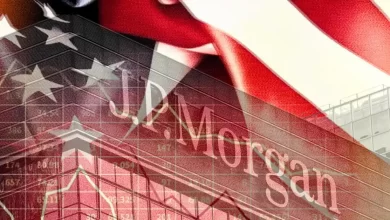Bitcoin’s Transformative Role As A Retirement Asset
The push for Strategic Bitcoin Reserve (SBR) legislation in 20 states is gaining momentum, but it may soon be overshadowed by a federal framework spearheaded by Senator Cynthia Lummis. With Bitcoin’s inflation rate below 1% and its scarcity of 21 million BTC, it is increasingly seen as a valuable asset that can withstand the erosion of traditional currencies.
One of the key advantages of Bitcoin is its transparent ledger, which can be verified by anyone, unlike traditional gold reserves. This makes Bitcoin an attractive option for retirement savings, as it is resistant to manipulation by central authorities.
The discussion around Bitcoin Strategic Reserves at a high level is significant because trust is the foundation of any functioning system. Bitcoin’s trustless system, based on cryptography and proof-of-work, minimizes the need for subjective trust and maximizes objective truth. This makes Bitcoin a resilient store of value, particularly for retirement savings.
However, despite the technical advantages of Bitcoin, surveys have shown that older generations are less trusting of digital assets. This is largely due to reputational signaling and the influence of mainstream media, which has historically shaped public perception of Bitcoin.
The potential establishment of a Bitcoin Strategic Reserve at a federal level could change the narrative around Bitcoin, particularly for older generations. This could lead to a significant shift in the adoption and integration of Bitcoin as a retirement asset.
If baby boomers, who hold a significant portion of US wealth, were to invest even a small fraction of their assets in Bitcoin, it could have a substantial impact on the price of BTC. Wealth funds have already begun to allocate a portion of their portfolios to Bitcoin, with some predictions suggesting that BTC could reach $500,000 by 2028.
This shift towards Bitcoin as a retirement asset could benefit not only older generations but also younger generations with smaller holdings. By leveraging Bitcoin as a maturing asset through self-custody or institutional investments, individuals can secure their retirement savings and potentially benefit from the appreciation of Bitcoin over time.
Overall, the discussion around Bitcoin as a retirement asset is gaining traction, and the establishment of a federal framework for Strategic Bitcoin Reserves could further solidify Bitcoin’s position as a valuable investment option for individuals of all ages. As fiat currencies continue to lose value, there has been a noticeable trend of inflows into Bitcoin. This is due to the fact that Bitcoin is a decentralized ledger backed up by a vast energy and computing network. In the past, people have relied on equities, commodities, or bonds to protect against the erosion of the US dollar. They have created various combinations of assets to maximize gains over time, including investing in individual stocks, mutual funds, and precious metals like gold and silver.
Mutual funds have become a popular option for retirement savings, as they offer tax advantages through vehicles like 401(k)s and IRAs. This existing financial infrastructure makes it easier to integrate Bitcoin into retirement planning. There are already Bitcoin individual Retirement Accounts (IRAs) available from companies like BitIRA, iTrustCapital, Bitcoin IRA, and Alto IRA.
Currently, paper Bitcoin is predominant in mutual funds, such as the Bitcoin ProFund (BTCFX), which provides exposure to Bitcoin through futures contracts. Despite the fact that this fund has delivered an annualized performance of 22.10% since its launch in July 2021, it is essential to note that the average mutual fund return on a 401(k) typically falls within the 3%-8% range, which may not be very impressive when adjusted for inflation.
The period from 2022 to 2023 was a turbulent time for Bitcoin, as it was caught up in the wider cryptocurrency market bubble that eventually burst. Government agencies, through Operation Choke Point 2.0, also made efforts to debank crypto firms from the financial system. However, attitudes towards Bitcoin and cryptocurrencies have shifted, with individuals like Senator Elizabeth Warren and Fed Chair Jerome Powell expressing concerns about debanking practices.
Looking ahead, Bitcoin is being integrated into traditional financial systems, with the potential for blockchain-native systems to emerge for future generations. These systems could offer decentralized pensions based on smart contracts, AI agents handling financial affairs, and advanced features like QR code scanning and automatic backups for accessibility.
In conclusion, Bitcoin has the potential to revolutionize retirement planning by offering new opportunities for retirees and their descendants. By prioritizing generating yield over selling holdings, Bitcoin-powered systems could reduce selling pressure on the market and potentially drive sustained upward momentum in Bitcoin’s price. Ultimately, Bitcoin could reshape the concept of retirement and transform how we think about money in the future. The world of technology is constantly evolving, with new innovations and advancements being made every day. One of the most exciting developments in recent years has been the rise of artificial intelligence (AI). AI is a branch of computer science that aims to create machines that can think, learn, and problem-solve like humans.
One of the key components of AI is machine learning, which is a type of AI that allows machines to learn from data and improve their performance over time. This is achieved through the use of algorithms that analyze large amounts of data and identify patterns and trends. Machine learning is used in a wide range of applications, from self-driving cars to personalized recommendations on streaming services.
Another important aspect of AI is natural language processing (NLP), which enables machines to understand and interpret human language. This technology is used in virtual assistants like Siri and Alexa, as well as in chatbots that provide customer service on websites.
AI is also being used in healthcare to improve patient outcomes and streamline processes. For example, AI-powered diagnostic tools can help doctors identify diseases more quickly and accurately, while predictive analytics can help hospitals better allocate resources and reduce wait times.
In the field of finance, AI is being used to detect fraudulent activity and make investment decisions. AI algorithms can analyze vast amounts of financial data to identify patterns that may indicate fraudulent behavior, while robo-advisors can provide personalized investment advice based on an individual’s financial goals and risk tolerance.
While AI has the potential to revolutionize many industries, it also raises ethical and societal concerns. For example, there are concerns about bias in AI algorithms, which can lead to discriminatory outcomes. There are also concerns about the impact of AI on jobs, as automation could lead to job losses in certain sectors.
Despite these challenges, the future of AI looks bright. As technology continues to advance, we can expect to see even more innovative applications of AI that will improve our lives in countless ways. From healthcare to finance to transportation, AI has the potential to transform industries and revolutionize the way we live and work.



